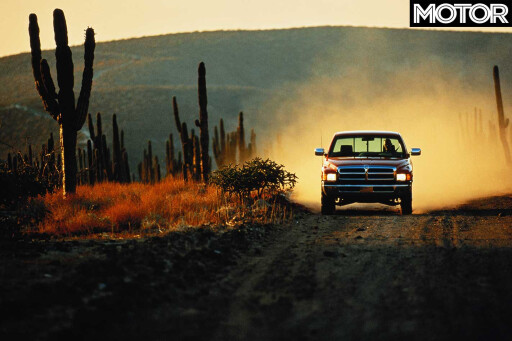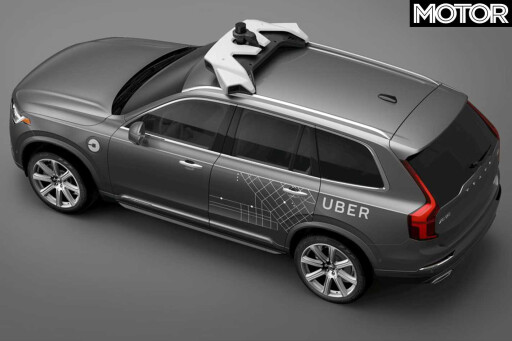.jpg )
Everyone laughs at reports of credulous goons who blindly follow directions from their GPS and drive into lakes or train tunnels. But I recently found there’s an even worse fate that can befall the hapless GPS acolyte.
I was driving in the US when the Google-powered GPS on my Android phone directed me off the freeway onto a rutted side road that was probably last repaved back when the Atari 2600 was the pinnacle of technology. Blithely, perhaps idiotically, I followed, figuring it was some sort of Palo Alto-approved shortcut.
About two klicks down the side road, I spy a Ram 2500 coming towards me. No problem – the road was easily wide enough for us to pass, even for a modern Ram pickup, which is only marginally smaller than a department store – except that about 50 metres out, the guy swerved across the road onto a collision course with me. Deliberately swerved – this wasn’t the idle lane-drift of an alfalfa farmer playing Candy Crush on his steering wheel, this was the hungry lunge of a crazed redneck who has watched Death Proof too many times.
 Thankfully, in the alfalfa-sprouting heart of nowhere, even the crappy side roads have wide dirt shoulders, and I had room to dodge around the, ah, Dodge, before it drop-kicked my own engine block into my face.
Thankfully, in the alfalfa-sprouting heart of nowhere, even the crappy side roads have wide dirt shoulders, and I had room to dodge around the, ah, Dodge, before it drop-kicked my own engine block into my face.
My pulse rate went from resting 60s to a jackrabbiting frenzy, as if I’d just spotted an In-N-Out restaurant without a queue. And I barely had time to shout something a bit blue when I saw in the rear view: the Redneck Kamikaze Killer was trying to pull a three-point turn. Now, the dirt shoulder was plenty roomy enough to swerve my little Ford on, or even raise quarter horses, but it was a bit tight for the Myers-sized Ram.
A man made of sterner stuff – or who has watched Deliverance fewer times – than I, might have stopped and confronted the ruffian, and schooled him in the finer points of what we simple city folk like to call “not murdering people”. Not me. I floored it, and with Google as my co-pilot… almost drove down a dead-end dirt track.
 The GPS on my phone was clearly telling me to go straight ahead, even as the road morphed from rutted coarse chip into dirt, but thanks to the local roads department – who had bothered to put up a “NO OUTLET” sign – I channelled my inner Pete Townshend: won’t get fooled again. I hooked a turn onto another side road, and while the Google lady spluttered indignantly about having to re-route, I fanged it back to the main drag and the safety of numbers.
The GPS on my phone was clearly telling me to go straight ahead, even as the road morphed from rutted coarse chip into dirt, but thanks to the local roads department – who had bothered to put up a “NO OUTLET” sign – I channelled my inner Pete Townshend: won’t get fooled again. I hooked a turn onto another side road, and while the Google lady spluttered indignantly about having to re-route, I fanged it back to the main drag and the safety of numbers.
If I had followed the Google directions, and stoppered myself in a dead-end road – or if the dead-end hadn’t been sign-posted – then the Psycho Pickup Ripper would have had time to complete his seven-point turn, and I’d currently be fertilising someone’s alfalfa, or possibly chained up and wearing a ball-gag in some backwoods tractor shed.
Now, just for the record, I was driving from southern California to Yuma, Arizona. That’s the same Arizona where Uber has been operating self-driving semi-trailers on the road for the past few months. A self-driving vehicle is only as good as the map it’s following, and I’m here to tell you – barely – that the maps are still not all the way there.
 “Uber’s maps are not the same as Google’s maps,” I hear a distant cartography nerd sniff, and that’s true – but Uber’s maps are the same ones that directed my Uber driver to ignore a “NO LEFT TURN” sign and dive through three lanes of traffic to make the on-ramp to the 101 in LA recently. Which he gamely did, bless him, although I don’t believe a semi-trailer would have had as much luck.
“Uber’s maps are not the same as Google’s maps,” I hear a distant cartography nerd sniff, and that’s true – but Uber’s maps are the same ones that directed my Uber driver to ignore a “NO LEFT TURN” sign and dive through three lanes of traffic to make the on-ramp to the 101 in LA recently. Which he gamely did, bless him, although I don’t believe a semi-trailer would have had as much luck.
So if you’re driving in the rural south-west someday, and you have to choose between being stalked by self-driving semis or getting off the freeway into the hunting grounds of a crazed yokel high from smoking GMO alfalfa, you’ll get how I feel: we should have just stuck with paper maps and the Atari 2600.

COMMENTS